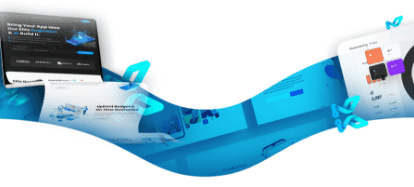
In the age of rapid technological advancements, the integration of augmented reality (AR) into education has emerged as a revolutionary tool, poised to redefine traditional learning methods.
Augmented reality, a technology that superimposes digital information onto the physical world, holds immense potential to enhance engagement, improve comprehension, and provide immersive learning experiences. From classrooms to laboratories, AR is reshaping the educational landscape, offering students and educators innovative avenues for exploration and discovery.
Enhancing Visual and Experiential Learning
Traditional teaching methods often rely heavily on textbooks and lectures, which may not cater to the diverse learning styles of students. Augmented reality offers a solution by providing visual and experiential learning opportunities that appeal to a wide range of learners. By visualizing abstract concepts and complex phenomena in 3D, AR makes learning more engaging and accessible. Whether it's exploring the human anatomy from every angle or observing the planetary movements in real time, AR brings subjects to life in ways that textbooks cannot replicate.
Fostering Collaborative Learning Environments
Collaboration is a cornerstone of effective learning, and AR facilitates collaboration by enabling students to interact with each other in shared virtual spaces. Through collaborative AR experiences, students can work together on projects, solve problems, and exchange ideas in real time, regardless of their physical locations. This fosters a sense of teamwork and encourages communication and critical thinking skills, essential for success in the modern workforce.
Personalized Learning Experiences
Every student has unique learning preferences and abilities, and AR technology allows educators to personalize learning experiences to meet individual needs. By tailoring AR content to suit the pace and learning style of each student, educators can ensure that all learners receive the support and resources they require to succeed. Additionally, AR can provide instant feedback and assessment, enabling students to track their progress and identify areas for improvement in real time.
Breaking Down Barriers to Access
Augmented reality has the potential to break down geographical and socioeconomic barriers to education by providing access to high quality learning resources regardless of location or financial constraints. With the proliferation of smartphones and affordable AR devices, students from diverse backgrounds can engage in immersive learning experiences without the need for expensive equipment or travel. This democratization of education opens up new possibilities for lifelong learning and skills development.
The Future of Learning
As technology continues to evolve, the role of augmented reality in education is only set to expand further. From AR enabled textbooks to virtual field trips and interactive learning games, the possibilities are endless. However, it's essential to recognize that AR should complement, not replace, traditional teaching methods. While AR can enhance learning experiences, it's the guidance and expertise of educators that ultimately shape the minds of tomorrow.


